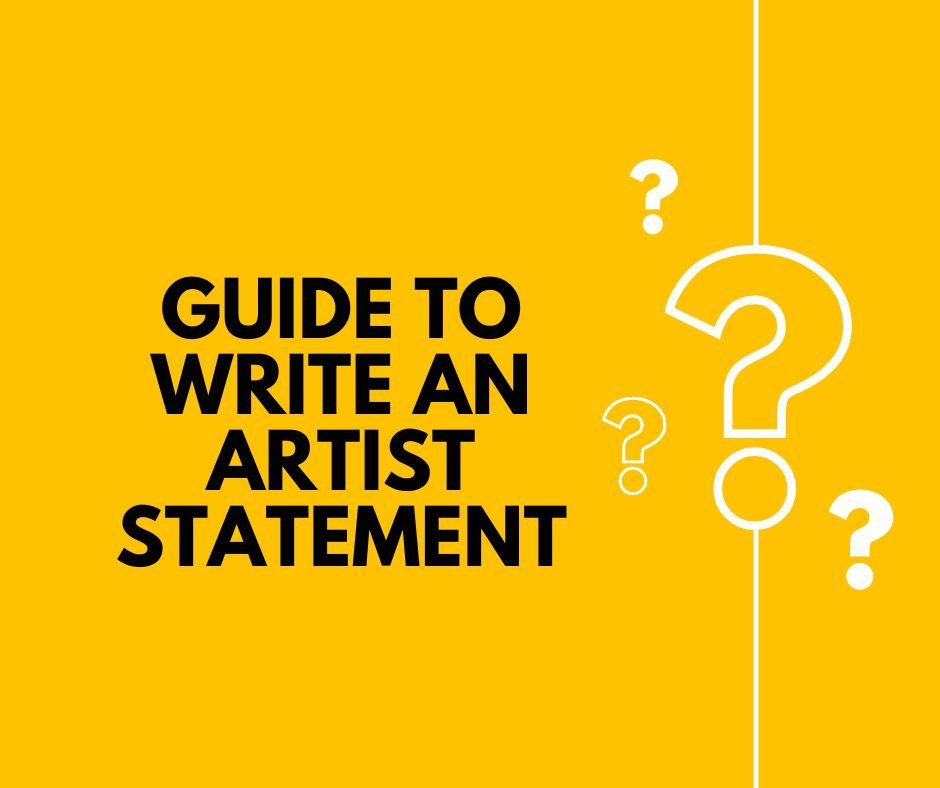what is artist statement?
An artist statement is a written document that explains the philosophy and intentions of an artist. It is typically used to provide a potential audience or patron with an understanding of the artist’s body of work and to express their creative goals and values. Artist statements are often included in an artist’s portfolio, exhibition proposals, and other professional documents.
what is artist statement structure:
The structure of an artist statement can vary depending on the artist’s individual needs. Generally, an artist statement includes the artist’s name, a description of the artist’s work, a summary of their creative process, and a statement of their goals and values. Additionally, some artist statements may include a brief biography, a discussion of the artist’s influences, and a list of exhibitions or awards.
- What is the intent and purpose of your art?
- What does it say about you as an artist?
- What keeps you motivated every day?
- What is your artist story?
- What questions are you often asked about your work?
- Who is your audience
Where is an artist statement used?
Artist statements are commonly used in artist portfolios, exhibition proposals, grant applications, and other professional documents. Additionally, artist statements can be found on websites, social media profiles, and other digital platforms.
How to write an artist statement?
An artist statement is a written document that provides insight into your work as an artist. It should help to communicate your creative vision, motivations, and goals to your audience. Here are some steps to help you write an effective artist statement:
- Start with a personal reflection: Take some time to reflect on your work, your creative process, and what motivates you as an artist. Write down your thoughts and ideas to help you get started.
- Determine your audience: Who will be reading your artist statement? Are you writing for potential buyers, gallery owners, curators, or the general public? Knowing your audience will help you tailor your statement to their interests and needs.
- Identify your core message: What do you want to communicate about your work through your artist statement? What sets you apart as an artist? What themes or concepts do you explore in your work?
- Use descriptive language: Use descriptive language to convey the essence of your work and what sets it apart. Avoid using technical jargon or art terms that may not be familiar to your audience.
- Keep it concise: Your artist statement should be brief and to the point, typically one to two paragraphs long. Avoid getting bogged down in details or going off on tangents.
- Review and revise: Read your artist statement several times, making revisions and edits as necessary. Get feedback from friends, family, or other artists to see if your statement effectively conveys your message.
- Update regularly: As your work evolves and changes, be sure to update your artist statement accordingly. This will help to keep your statement current and relevant.
By following these steps, you can write a clear, concise, and effective artist statement that effectively communicates your unique perspective and vision as an artist.
Writing an artist statement can be one of the most daunting tasks for an artist. An artist statement is a brief overview of an artist’s work, typically including a description of the artist’s creative process, inspiration, and a summary of the kind of work they produce. Artist statements are meant to be engaging and informative, providing readers with an understanding of an artist’s work and how it fits within the broader art world.
When writing an artist statement, start by researching other artist statements. Take notes on what you like and don’t like about them, and look for common elements such as the length of the statement, the tone, and the way it is organized. This will help you get an idea of what works and what doesn’t when it comes to writing your own artist statement.
The next step is to identify the main points you want to make in your statement. What do you want to convey to the reader? What are the most important aspects of your work that you want to emphasize? Write down these main points, and use them to help guide the rest of your artist statement.
When you’re ready to craft your statement, start by introducing yourself. Give a brief overview of your background and how you got into art. Explain what mediums you use and what your particular style or focus is. If you have any awards or accomplishments, this is a good place to mention them.
Next, explain the creative process behind your work. What inspires you? How do you come up with ideas for your art? Describe the techniques you use, and the materials you prefer. This is your chance to give the reader insight into how you create your art and the thought process that goes behind it.
Finally, wrap up your statement by summarizing the most important points you want to make about your work. Explain what makes your work unique, and why it is important. What themes or messages do you aim to convey?
Your artist statement is your chance to tell the world who you are as an artist and what your work is about. With some thought and care, you can create an effective and engaging statement that will introduce your art to a wider audience.
what about artist discourse?
Artist discourse is the written and spoken language used by artists to communicate their ideas, beliefs, and experiences related to their artwork. It is a form of creative expression that is used to share information, inspire others, and develop a larger understanding of the creative process.
Artist discourse can take many forms, including interviews, lectures, articles, books, and social media posts. It can be used to provide context for artwork, to explain an artist’s creative process and motivations, or to share personal stories and experiences.
Artist discourse is an important part of the art world, as it allows artists to share their thoughts and ideas with a wider audience. Through discourse, artists can create a dialogue between themselves and their viewers, helping to create a deeper understanding and appreciation of their work.
and what is artist style?
An artist’s style is a distinct way of expressing themselves through their artwork. It is the combination of techniques, approaches, materials, and subject matter that makes a particular artist’s work recognizable and unique.
An artist’s style is often shaped by their training, experience, and personal interests. It can also be influenced by the art of other artists, as well as by non-artistic influences such as music, literature, and film.
Artists often develop their own unique styles over time as they experiment and refine their techniques. Developing a recognizable style can be a long and difficult process, but it is a key part of becoming a successful artist.
A few DONT’S to writing artist statement:
1. Don’t use jargon or technical language.
2. Don’t use overly flowery language. 3.
Don’t be long-winded or ramble.
4. Don’t make the artist statement personal.
5. Don’t use cliches.
6. Don’t be overly negative.
7. Don’t make it too general or vague.
8. Don’t focus on what you think people want to hear.


